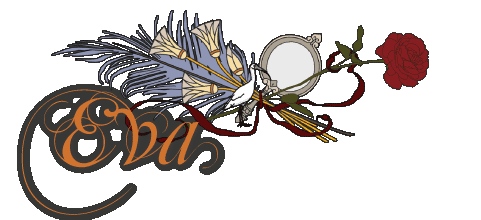An interview with the Book Rat for her Annual Helluva Halloween blogs:
What was the initial inspiration for the 2 books, and how much have they changed since the initial idea?
I was looking for a way to combine my various interests that enabled me to also work with other creative people.
Relations That Suck turned into a much larger project than I had initially anticipated. Norma and Angela (the photographers) were both really excited about the project and brought their own perspectives to it. This made the project much more rich and complex. We needed more props, special lights, and specific locations for the shoots. I’ve really enjoyed working with them and think we’ve made some beautiful photos together.
La Femme Fatale came about because readers wanted to know more about Eva. I wanted the book medium to complement Eva’s story, so choose the format of illustrated cards. The main change was regarding the text. We (Heather, my co-writer, and I) outlined what content each card should contain, either in image or text form. Then we wrote the text and created the illustrations. As we laid them out together on the cards we realized that the space for the text was more limited than we had initially thought. We had to pare the text down to what as essential to convey the main action in that card. Everything else we put into the Companion.
Click for more information on the process for both books.
Both Relations That Suck and La Femme Fatale are non-traditional forms for books: what inspired the creation of a story told through photos and a tarot deck?
I wanted to create books that told a story and were also beautiful objects.
Correct me if I’m wrong, but you designed all of the pieces worn by the models in Relations, and all of the artwork on the cards in Femme – can you tell us a bit about the process in both cases?
Relations That Suck: I started by thinking of what Eva’s aesthetic preferences were – figuring out what someone with her personality and sensibilities would like as well as looking at her life path and what styles of dress she would have experienced. I put all these elements together in various combinations to create her wardrobe.
La Femme Fatale: I wanted the images that conveyed the story to reflect the time period of the story they illustrated. In Relations That Suck, the photos are shot in the style of contemporary fashion photography because that portion of the story takes place in the 21st century. For the cards, photography didn’t make sense. Eva’s story began in the 14th century and photography wasn’t invented until the 1850’s. I decided to use a simple illustration style with blocks of color instead of shading and blending. This style transcends time and space by referencing many similar styles of illustration for many different times and places such as silk-screen poster art from the 1960’s and 1970’s, medieval stained glass and mosaic, Egyptian tomb paintings, and wood block prints used in many cultures.
Click for more information on the card illustrations: Part One and Part Two
For Relations, did you design the pieces to fit the story or did the story evolve out of the pieces you were designing?
The pieces were designed to reflect different aspects of Eva’s personality and history. I choose outfits for the shoots based on the story. For example when Eva was depressed about almost killing someone, she tried to lose herself in her lace-making. Thus she was depicted wearing a lace-like dress that blended in with the doilies that surrounded her. Later in the story when she actually killed the man, Eva was dressed more like a warrior, wearing a bustier and leg accessories that resembled armor.
Are there plans to do any more books or art forms related to Eva’s story? Or plans to begin a new story?
For the next step in the evolution of Eva’s story I am interested in fostering more perspectives and interpretations of Eva. I am using the creation of Eva’s mythology as an example of how people can approach religions more creatively and constructively. I see religions as shared belief systems that provide guidance for living and tools to keep one’s values and actions aligned. Because religions are shared dreams it has always been important to me to work with people whose beliefs are complimentary with Eva’s and can contribute to her story’s development and evolution. Now I’m interested to see what Eva’s story inspires readers to do – what things they will create to personalize Eva’s story to be helpful in their lives. I am not sure exactly what process this will take.
Click for more information on Creating a DIY Religion.
You also have a website devoted to sustainable clothing designs and studied urban planning – how have these two passions/elements influenced your work?
Sustainability, clothing design, urban planning, and story-telling all reflect my perspective of the world, one of appreciation and celebration, awareness, compassion, and collaboration. The awareness of sustainability starts with a general awareness of oneself and how all things are connected. The structures in our lives can facilitate personal growth and awareness. The practice of urban planning is about creating and modifying systems and structures to facilitate living. Eva’s story is one of personal exploration and a struggle for self-determination. Her journey leads her to find compassion – compassion for others, the world, and eventually for herself. The format of the cards provides a structure for the reader to reflect and meditate within to help advance their personal journey.
Where do you see yourself 5 years from now?
I hope to be working on fun and interesting projects with other talented, creative people. One thing I am currently working on, that I hope will be up and running in five years, is a co-working space for creative people in San Francisco (aiming to open sometime next year).


